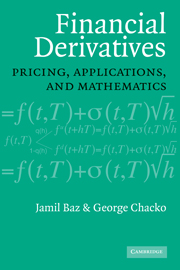Introduction
Published online by Cambridge University Press: 05 June 2012
Summary
This book is about risk and derivative securities. In our opinion, no one has described the issue more eloquently than Jorge Luis Borges, an intrepid Argentinian writer. He tells a fictional story of a lottery in ancient Babylonia. The lottery is peculiar because it is compulsory. All subjects are required to play and to accept the outcome. If they lose, they stand to lose their wealth, their lives, or their loved ones. If they win, they will get mountains of gold, the spouse of their choice, and other wonderful goodies.
It is easy to see how this story is a metaphor of our lives. We are shaped daily by doses of randomness. This is where the providential financial engineer intervenes. The engineer's thoughts are along the following lines: to confront all this randomness, one needs artificial randomness of opposite sign, called derivative securities. And the engineer calls the ratio of these two random quantities a hedge ratio.
Financial engineering is about combining the Tinker Toys of capital markets and financial institutions to create custom risk-return profiles for economic agents. An important element of the financial engineering process is the valuation of the Tinker Toys; this is the central ingredient this book provides.
We have written this book with a view to the following two objectives:
to introduce readers with a modicum of mathematical background to the valuation of derivatives
to give them the tools and intuition to expand upon these results when necessary
- Type
- Chapter
- Information
- Financial DerivativesPricing, Applications, and Mathematics, pp. 1 - 4Publisher: Cambridge University PressPrint publication year: 2004



